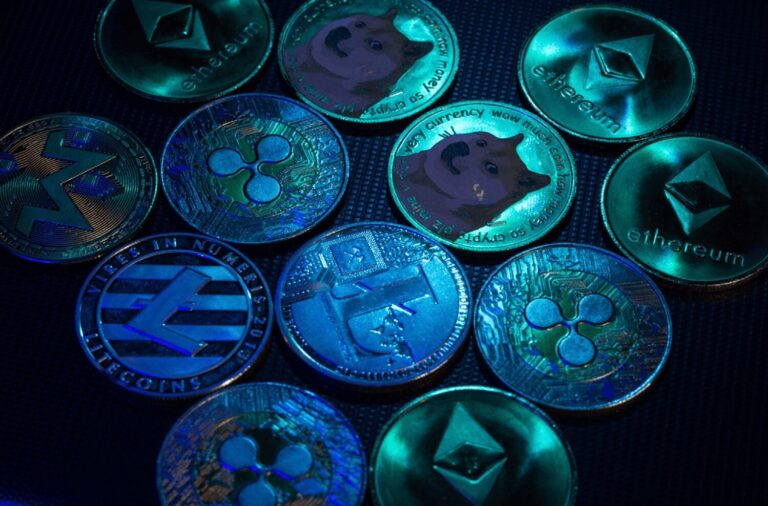
XRP coin
In cryptocurrency markets, “Ripple” and “XRP” are often used interchangeably — a habit that has fueled confusion among investors, media outlets, and even some industry analysts.
While they are closely connected, Ripple is a private fintech company, and XRP is a digital asset that exists independently on the XRP Ledger. Understanding the difference is crucial, not just for clarity, but also for grasping the technology’s role in the global payments industry and the ongoing regulatory debates.
Ripple: The Company
Who They Are
Founded in 2012 (originally as OpenCoin), Ripple is a San Francisco-based financial technology company that builds payment solutions for banks, payment providers, and remittance services.
Its mission is to modernize cross-border transactions, replacing slow and costly legacy systems like SWIFT with a blockchain-based network.
Core Products
Ripple operates RippleNet, a global payments network offering:
-
On-Demand Liquidity (ODL): Uses XRP to settle cross-border payments instantly.
-
Messaging & Settlement APIs: Let banks integrate RippleNet into existing infrastructure.
-
Regulatory Compliance Tools: Designed to meet anti-money laundering (AML) and know-your-customer (KYC) standards.
Ownership and Structure
Ripple is a privately held company backed by venture capital investors. It holds a significant amount of XRP, which it sells periodically to fund operations and incentivize network growth.
XRP: The Token
What It Is
XRP is a cryptocurrency that runs on the XRP Ledger, an open-source, decentralized blockchain launched in 2012. Unlike Bitcoin, it does not rely on Proof-of-Work mining — instead, it uses a consensus protocol to validate transactions in seconds.
Purpose
-
Acts as a bridge currency in cross-border payments.
-
Provides liquidity on demand for financial institutions using RippleNet.
-
Can be traded independently on crypto exchanges, used for micropayments, or integrated into non-Ripple applications.
Independence
The XRP Ledger is not owned or controlled by Ripple. Anyone can run a validator node, and transactions occur without needing Ripple’s approval. Ripple is simply one of many participants in the ecosystem.
The Source of Confusion
-
Branding History – For years, Ripple Labs marketed XRP under the name “Ripple,” reinforcing the misconception that the company and the token were the same thing.
-
Corporate Holdings – Ripple’s large XRP reserves make the link between the company and the cryptocurrency more visible.
-
Media Oversimplification – Headlines often use “Ripple” when referring to XRP price movements.
Legal and Regulatory Context
This distinction became central in the U.S. Securities and Exchange Commission’s (SEC) lawsuit against Ripple in December 2020. The SEC alleged that Ripple’s sales of XRP constituted unregistered securities offerings.
In 2023, a court ruled that XRP is not a security when sold on public exchanges, but certain institutional sales by Ripple violated securities laws. The decision underscored the separation between the token’s existence and the company’s actions.
Key Differences at a Glance
| Aspect | Ripple (Company) | XRP (Token) |
|---|---|---|
| Nature | Private fintech company | Decentralized cryptocurrency |
| Founded | 2012 | 2012 |
| Main Purpose | Build payment solutions for banks & enterprises | Facilitate fast, low-cost digital asset transfers |
| Control | Controlled by Ripple’s management | No central control; governed by consensus |
| Ownership | Privately held by investors | Owned by anyone who holds XRP |
| Blockchain | N/A (uses XRP Ledger) | Runs on XRP Ledger |
| Regulation | Subject to corporate and securities laws | Subject to crypto and digital asset regulations |
Why the Difference Matters
Confusing Ripple and XRP can lead to:
-
Investment Misunderstandings: XRP’s price moves based on market supply/demand, not Ripple’s equity valuation.
-
Legal Implications: Court cases hinge on whether XRP transactions involve the company or the token independently.
-
Adoption Narratives: Financial institutions can use the XRP Ledger without necessarily engaging with Ripple directly.
“Ripple is a company building payment infrastructure. XRP is a digital asset that happens to be one tool in their toolbox — but it can be used far beyond Ripple’s reach,” says Daniel Cho, a fintech policy analyst.
Conclusion
Ripple and XRP are related but distinct. Ripple builds technology solutions, some of which use XRP to move money across borders. XRP, meanwhile, is an independent cryptocurrency that anyone can use — with or without Ripple’s involvement.
Separating the brand from the blockchain is more than a matter of accuracy; it’s essential for understanding the future of digital payments and how blockchain technology fits into global finance.


